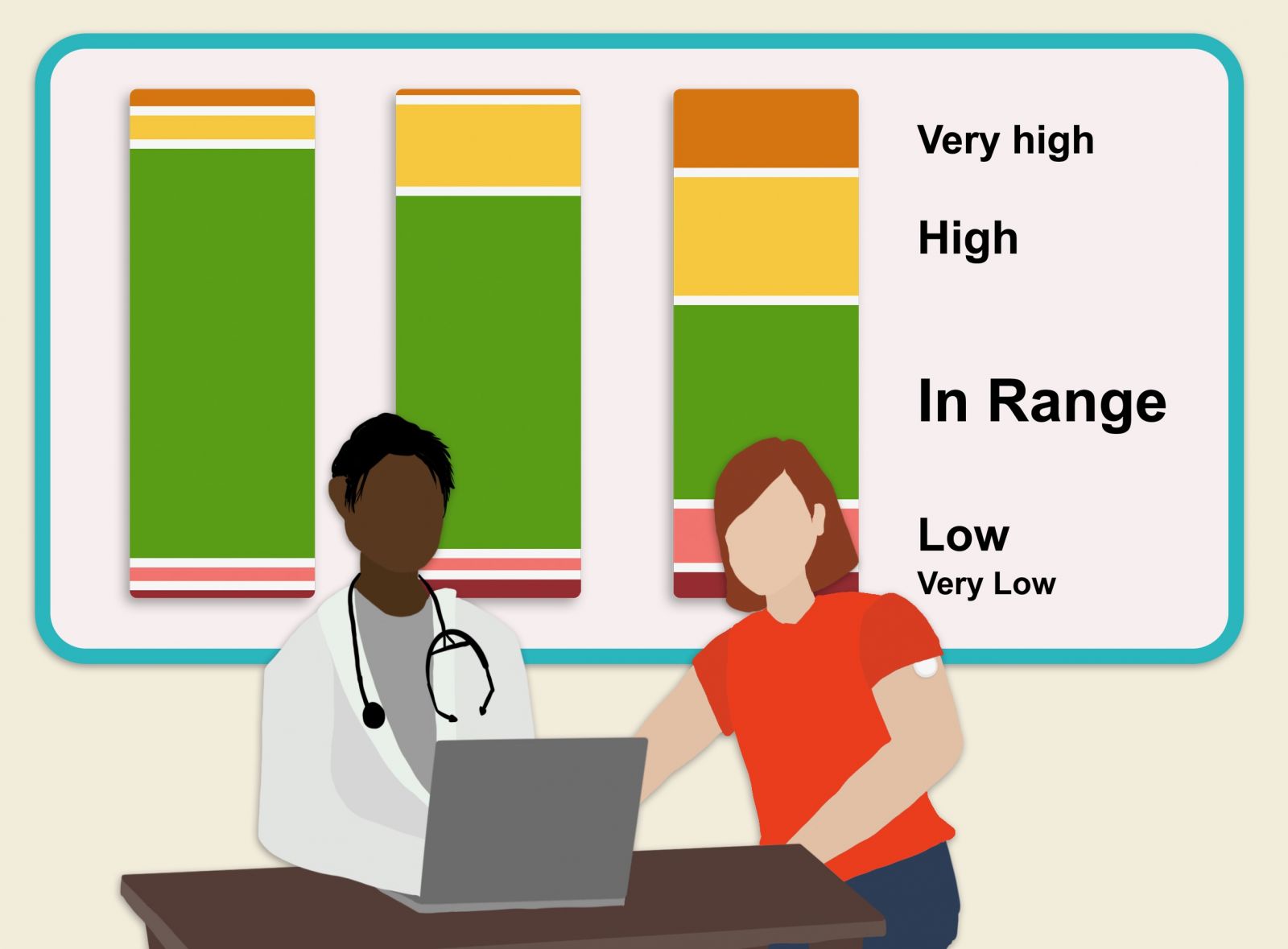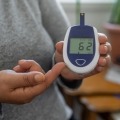Why We Use Time in Range – Real-Life Perspectives
By Eliza Skoler
 Four people from the diabetes community share insights on how and why they use Time in Range in their diabetes management, why it’s so different from relying only on A1C tests, and tips for success.
Four people from the diabetes community share insights on how and why they use Time in Range in their diabetes management, why it’s so different from relying only on A1C tests, and tips for success.
“The most important thing that I’ve learned is how much better my A1C is when I pay attention to my Time in Range,” said Phyllisa Deroze, a diabetes advocate, blogger, Director of Research at dQ&A, and professor of English Literature who has lived with diabetes since 2011. “It wasn’t as difficult as I thought to manage my Time in Range – in the beginning I didn’t feel good about going above or below the range, but I’ve come to realize that’s a part of life with diabetes. I now care more about how long I spend out of range than whether I get out of range at some point during the day.”
As more and more people with diabetes become familiar with Time in Range (TIR), diaTribe wanted to know how people are using this helpful diabetes metric in their day-to-day lives. We talked to people in the diabetes community to hear their stories, tips, and insights. To learn more about Time in Range click here.
“It seems confusing at first, but for me, TIR seems to be much more important than my A1C reading. And yet, it correlates so well. For example, if my TIR is lower than I’m comfortable with, then my A1C will likely be higher than I’m comfortable with” shared Sarah Knotts, who has lived with type 1 diabetes for 32 years. She has two young children and works with mySugr as the US Head of Customer Support. “I used to struggle so much and worry myself sick over my A1C. Learning to use and leverage the understanding of Time in Range (along with Standard Deviation) helped me tremendously in my personal journey to managing diabetes. And honestly, my A1C isn’t even as much of a factor anymore – I care more about what my TIR and Standard Deviation reflect than what my A1C result may be.” Read “Understanding Average Glucose, Standard Deviation, CV, and Blood Sugar Variability” to learn more about Standard Deviation.
“A1C can be utterly meaningless sometimes,” agreed Christel Oerum, who was diagnosed with type 1 diabetes at the age of 19 and created Diabetes Strong with her husband in 2015. “I had a period of time where I had too many low blood sugars (like coasting at 60 mg/dL most nights) and my A1C was great, but I was exhausted, and it was affecting my quality of life. I’ve also had periods where I was anemic, which throws off my A1C, making TIR a more meaningful indicator of whether I needed to adjust my care.”
As a parent of a teenager with diabetes, Stacey Simms has found comfort in Time in Range. “I’ve learned that my son spends very little time in the glucose extremes. Looking at his Time in Range shows me that – especially since starting Basal-IQ and now with Control-IQ – his time in the low/urgent low range is minimal. That’s comforting and it tells me that his pump settings are where they should be.” Simms is the host of Diabetes Connections and author of The World's Worst Diabetes Mom: Real Life Stories of Parenting a Child with Type 1 Diabetes.
So, how can you use Time in Range? “If you’re competitive, ask a diabuddy to join you in setting a goal that week, perhaps aiming for 90% in range for at least 3 days. If that’s not your style, then try apps that nudge you throughout the day to help you stay on track,” suggested Deroze. “I enjoy using the app Happy Bob. The frequent reminders that appear on my cell phone and my smart watch tell me how I am doing. I have other apps, but none are as smart, savvy, and insulting as Happy Bob – I can be motivated by humor and trash-talking, so snarky Bob is perfect for me.”
For some people with diabetes, Time in Range can feel like one more number to think about in diabetes management. “When I first learned about the importance of TIR, I initially thought that it would be an added burden, but since I try not to agonize over daily perfection, it’s doable for me. I check my TIR status weekly to see if I’ve had any days at 100% and to check to see which were my best days,” said Deroze.
Simms agreed. “Time in Range didn’t change our diabetes management very much. It’s a great tool to check on for trends and adjustments, but we don’t use it very often. I thought we’d look at it and use it all the time. That said, I do appreciate that it gives a fuller picture than just A1C and I’m glad to have it when we need it.”
For more perspectives on using TIR as a helpful number, check out our recent article “Remember, Your Time in Range Isn’t a Grade Either.”
Oerum wrapped it up nicely. “TIR for me means more details on how my management is going and it can help me home in on what to change and what to leave alone. In that sense, it’s more meaningful than a single fingerstick or my A1C, which isn’t always actionable in itself.”
This article is part of a series on Time in Range.
The diaTribe Foundation, in concert with the Time in Range Coalition, is committed to helping people with diabetes and their caregivers understand time in range to maximize patients' health. Learn more about the Time in Range Coalition here.








